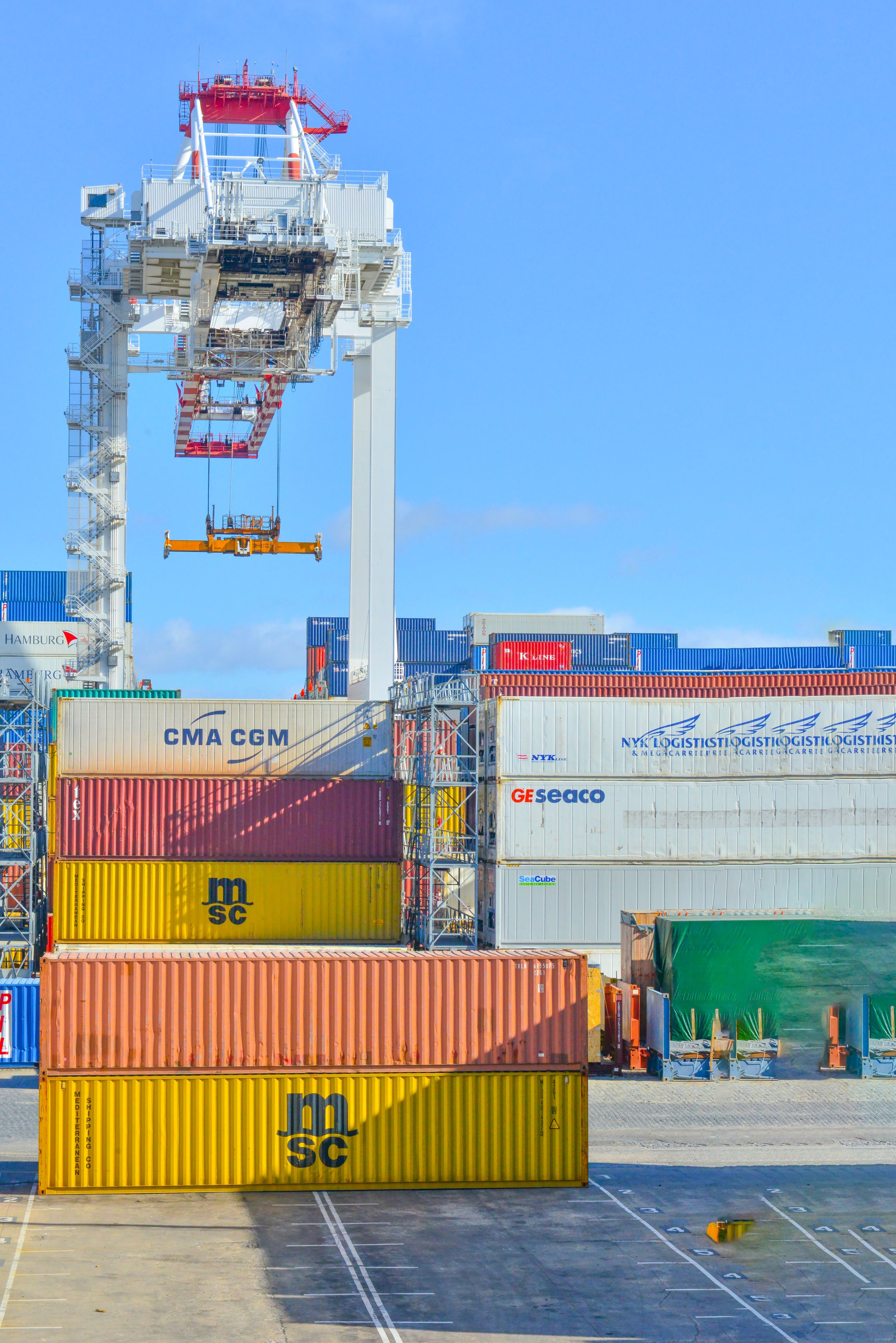Shipping Container Crunch Underway As Rates Skyrocket
A perfect storm in global trade is causing a major shipping container shortage, leading to unexpected spikes in ocean freight rates. The start of peak shipping season, longer transit routes to avoid the Red Sea, and bad weather in Asia are all disrupting key trade routes. To stay on schedule, ocean carriers are skipping ports and not picking up empty containers.
This container crunch hits as consumer goods for back-to-school and holidays need to be shipped. Spot rates, especially from the Far East to the U.S. West Coast, are skyrocketing, surpassing earlier highs. Senior shipping analyst Emily Stausbøll from Xeneta notes the widening gap between spot and long-term rates, leading to increased cargo rollovers.
Bad weather in East Asia and longer routes have caused delays, forcing carriers to skip ports and shorten turnaround times, reducing the number of empty containers returned to China. This shortage is causing significant rate hikes, with some contract rates doubling in just a month.
Experts warn that these logistics price increases will eventually affect consumers, recalling the chaos and high costs experienced during the COVID-19 pandemic. With holiday and back-to-school shipping starting early to avoid potential strikes at East Coast or Gulf ports, the logistics industry is bracing for a challenging season ahead.
Why This Matters:
If you're in the transportation and logistics game, this container crunch directly hits your bottom line and disrupts your planning. Skyrocketing freight rates mean higher costs, which you might have to pass on to customers. Delays and shortages of empty containers can mess with your schedules, leading to missed deadlines and unhappy clients.
Our Take:
With the shipping chaos reminiscent of the pandemic era, it's clear that the logistics landscape remains volatile. To stay ahead, consider diversifying your supply chain routes and building stronger relationships with carriers to secure better rates and reliable capacity. Keep an eye on spot rates and be prepared to adapt quickly as the situation evolves.
A top cybersecurity firm, ESET, has uncovered Chinese hacking attempts in the European cargo shipping industry, marking the latest instance of China-aligned groups infiltrating Western economic infrastructure.
Phil Yeager, the CEO of Hub Group, highlighted ongoing financial pressures during the company's recent earnings call, pointing to a soft market mainly caused by an excess of truckload capacity that hasn’t yet exited the industry.
Last month, a major incident occurred when Baltimore's Key Bridge, a crucial artery for transit and shipping, was struck by a cargo ship and collapsed.
The Panama Canal faced a shipping crisis due to a surplus of capacity, prompting restrictions that affected global trade.
The container shipping industry is grappling with a surplus of capacity, leading to a drop in customer rates that Maersk CEO Vincent Clerc described as unsustainable during the company's annual shareholder meeting.
Ocean Network Express (ONE) has partnered with Pan Pacific International Holdings Inc. (PPIH) and NAX Japan to launch the world's first trial of a dual-temperature refrigerated container equipped with Controlled Atmosphere (CA) functions.
The shipping industry may struggle to secure enough carbon-neutral fuels to meet the 2030 maritime emission targets, according to DNV.
The Port of Oakland experienced a decline in total container volume in June 2023 compared to the same month last year.
The freight industry is grappling with inflationary pressures, including labor cost increases and reduced consumer spending
The latest Cass Freight Index data suggests that the U.S. freight market may be nearing a bottom, with signs of a new cycle emerging.
The number of blank sailings in the global container shipping market has reached its lowest point since the pandemic began, indicating a path toward normalization, according to Sea-Intelligence.
Descartes Systems Group's Global Shipping Report reveals that container import volumes in the United States slightly decreased in June compared to May 2023 but were significantly higher than pre-pandemic levels in June 2019.
The Port Tracker report, published by the National Retail Federation and Hackett Associates, highlights labor concerns as a significant factor in assessing the state of US-bound container imports.
Container prices have experienced a significant drop, with the average price of 20ft dry containers in New York falling by 82% from its peak in June 2021.
Freight forwarders remain hopeful for a container demand recovery this year, according to a survey by Container xChange.
Container terminals at the Port of Los Angeles have reopened after work stoppages caused by labor disputes.
According to complaints filed with the U.S. Federal Maritime Commission (FMC), all of the top ten ocean container carriers have been accused of price gouging and unfair practices by shippers over the past 18 months.
The container shipping industry witnesses a record-breaking 27.5% decline in global long-term freight rates in May, marking the ninth consecutive month of rate drops, according to Xeneta's Shipping Index.
The Federal Maritime Commission (FMC) has imposed fines on carriers Ocean Network Express (ONE) and Wan Hai Lines, totaling $2.65 million, for violating the Ocean Shipping Reform Act of 2022 through unreasonable pricing practices related to demurrage and empty container returns.
ContainerPort Group has announced its relocation to a new eight-acre terminal in North Charleston, South Carolina.
Since implementing COVID restrictions and subsequently reopening its economy, China has been striving to generate positive momentum.
California's $2.8tn freight industry is facing a threat as Southern California's ports are losing their dominance due to the pandemic's cargo crush pushing the ports close to breaking point.
Shipping carriers are experiencing financial difficulties as container volumes continue to decrease since mid-2022.
Shipping companies are increasing their rates to ship containers from Asia to the US as they attempt to offset a fall in rates ahead of the importing season.
Last month, the container volumes received by the U.S. dropped 28% in merely thirty days.
JD.com is looking to grow its US logistics arm into its third self-operating warehouse in California.
Intermodal refers to the transportation of goods or cargo using multiple modes of transportation, such as rail, truck, and ship, without handling the goods themselves when changing between modes.
G Captain Founder and CEO Captain John Konrad is signaling the importance of changing how banks int he US operate when funding shipyards and naval security.
Container lines have historically been able to withstand increases in vessel capacity, but a massive increase in capacity could potentially pose challenges for the industry.































A perfect storm in global trade is causing a major shipping container shortage, leading to unexpected spikes in ocean freight rates.